Gainward Geforce Gtx 1060 6gb Test
Gainward GeForce GTX 1060 6GB Phoenix GS
With its GeForce GTX 1060 6GB Phoenix "GS", Gainward aims for a slightly more than demanding enthusiast without giving in to excessive overclocking madness. You tin retrieve of the company every bit a sort of luxury make belonging to Palit, so it benefits from the arrangement's substantial resources. It's merely a shame that our U.Southward. readers don't have access to the board. According to Gainward's webpage, the GeForce GTX 1060 6GB Phoenix "GS" is only available in Europe and Asia.
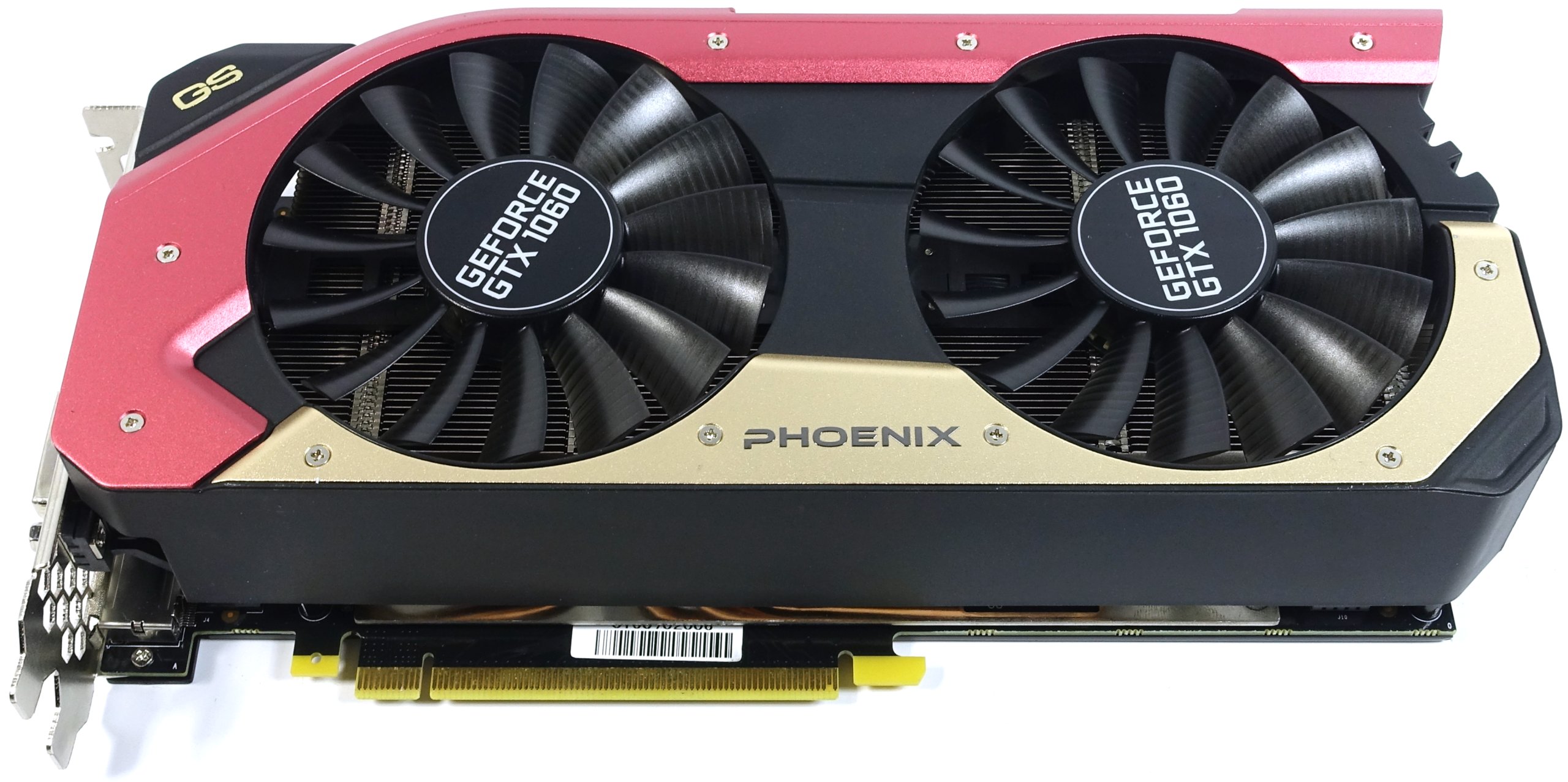
Gainward labels its top-performing cards in a given product family unit with the Golden Sample (GS) suffix, and that's exactly what our High german lab received for testing.
Technical Specifications
MORE: Best Graphics Cards
MORE: Desktop GPU Performance Hierarchy Table
More than: All Graphics Content
Outside & Interfaces
The cooler cover is made of black plastic with various metallic highlights. Information technology is designed to exist used every bit an attachment, just like the fan modules. Thus, a Palit card could easily be transformed into a Gainward one and vice versa.
Although the card weighs a moderate 31oz (875 grams), it is fairly compact, measuring ix½ inches (24cm) long and iv iii/5 inches (11.7cm) tall. However, it'south besides 4.7cm broad, nearly requiring 3 expansion slots and making installation in mini-ITX motherboards difficult.

The back of the board is covered by a single-piece plate that lacks openings for ventilation and does nada to cool the PCB. Considering of the backplate, though, y'all must program for an additional i-fifth of an inch (5mm) of clearance to avoid collisions with your CPU's libation, particularly in small form cistron cases.

The superlative of the card features a Gainward logo back-lit with customizable RGB LEDs. A single half dozen-pin power connector is rotated by 180° and positioned at the end of the card.
A closer look at the bottom reveals that the rut pipes aren't embedded in a rut sink, just rather lay flat backside the base of the lath. You lot can bet we'll explore how well this toll-constructive implementation holds upwards to taxing graphics workloads.

Horizontally-oriented fins let some waste heat to escape from an externally-facing slot bracket loaded with ventilation holes. This also applies to the bill of fare'southward other stop, though, where hot air dumps out into the eye of your example. Good circulation is critical as a effect.

The slot cover exposes 5 outputs, four of which can exist used simultaneously to drive multi-monitor configurations. In improver to one dual-link DVI output (which lacks an analog signal), you lot too get 1 HDMI 2.0 interface and 3 DisplayPort 1.4-capable connectors.
Board & Components
The PCB that Palit and Gainward utilise features some prominent differences compared to Nvidia's reference design.
Correct off the bat nosotros see iv ability phases, simply like Nvidia's card. Three are meant for the GPU and one corresponds to the retentivity. Two of the three GPU phases are fed by the auxiliary ability connector. The third GPU phase and the i for the retention get power from the motherboard slot.

While, in theory, Gainward's PCB offers the selection to use one more than ability phase, the company went with a rarely-used and rather inexpensive NCP81174 for its PWM controller, which can only control up to iv phases. Thus, the vacant emplacement yous see in the image above could only have been populated by another parallel regulator circuit (via doubling).
The three GPU phases utilize a highly integrated Vishay SiC632, which combines the gate driver, high- and low-side MOSFET, and Schottky-diode in one convenient package. Meanwhile, the retentiveness is driven by a pair of N-Aqueduct MOSFETs, including one SM4503NHKP (30A, high-side) and i SM4377NSKP (50A, low-side), both manufactured by Sinopower. The MOSFETs are also fairly cost-effective choices.
Overall, the lath reflects that Gainward didn't spend large on pricey components. Even the Foxconn Magic chokes are middle-of-the-road. They get their job washed in a rather unremarkable manner.
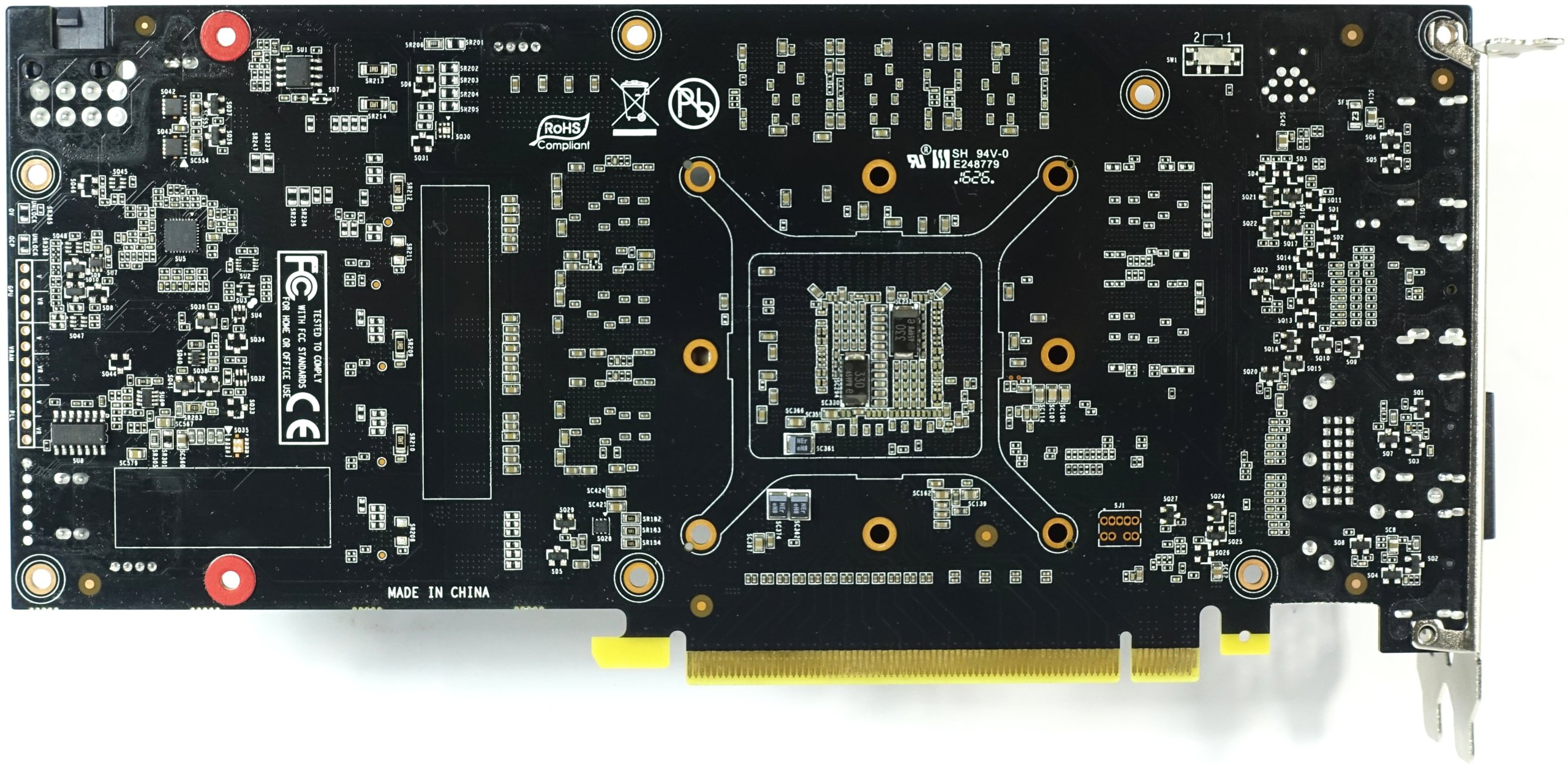
2 capacitors are installed right below the GPU to absorb and equalize voltage peaks.
Only 6 of the eight bachelor memory emplacements are populated with Samsung K4G80325FB-HC25 modules. Each one adds 8Gb (32x256Mb) and operates at voltages between 1.305 and 1.597V, depending on clock charge per unit. In full, they add together up to this carte du jour'south 6GB of GDDR5.
Power Results
The GPU Boost frequency and core voltage curves are particularly interesting to u.s.. Our data shows that frequency drops slightly as the card heats up during a gaming session.
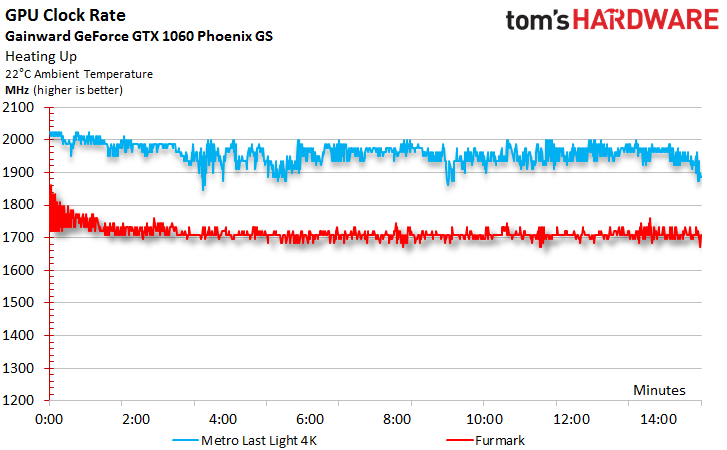
The 2025 MHz GPU Boost frequency we initially measure falls to 1949 MHz under load. Voltage behaves similarly: we measured 0.975V on average, with readings varying betwixt 1.025 and 0.9V. All of this points back to GPU Boost iii.0 and a relatively low power target that limits consumption to a maximum of 130W.
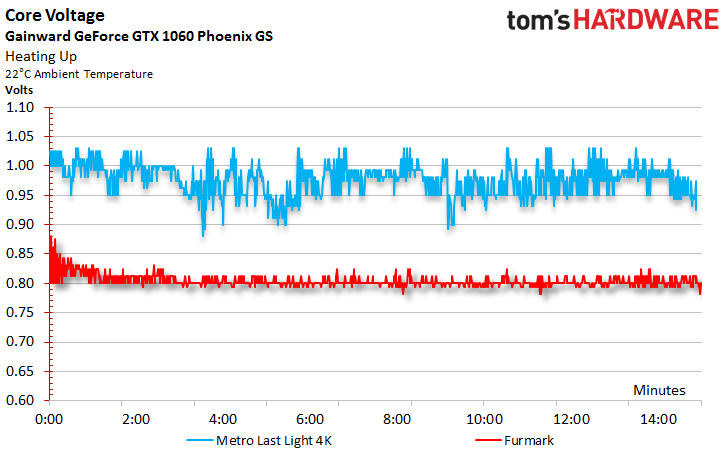
The everyman GPU clock rate measured with an idle card is about 253 MHz.
Nosotros took our measurements using a variable low-pass filter, so we mention short load peaks only as a side note (see the grayed-out bar in the nautical chart beneath), since those peaks are rarely relevant in practice.

A depression power target causes GPU Boost to cut the voltages dramatically during our stress test, resulting in ability consumption numbers that are lower than what we measure during a worst-example gaming workload.
Ability Connector Load
Load distribution from the four voltage regulators to their corresponding ability phases isn't problematic at all. Nonetheless, in that location'due south piffling headroom for overclocking, even if it wasn't already express by the firmware's power target and voltage settings.

Hither's the data for the gaming and stress tests:

Power consumption on its ain only tells us part of the story. The PCI-SIG specifies a maximum of five.5A at the motherboard slot, and nosotros're showing a reading under 5A, which puts Gainward's GeForce GTX 1060 6GB Phoenix "GS" in the light-green.

Of course, we accept the information for measured currents as well:

The Cooler And Its Performance
As mentioned, Gainward's backplate is purely aesthetic; information technology doesn't help cool the PCB at all. 4 screws secure it to the summit of the board, shielding the bill of fare from curious customers.

Though the Gainward and Palit shrouds look a niggling different, everything else is generally identical (at to the lowest degree up to the geometry of their respective 9cm fans; Gainward went with a conventional straight edge).

Once again, the delicate-looking cooler sports horizontally-oriented fins, as well every bit a quartet of 4mm heat pipes made from sintered blended material. Those pipes are not integrated into the bottom of the cooler. Instead, they only touch the back of the sparse base plate. Expensive copper is nowhere to exist found.

We're glad to see that the base of operations plate has a specific expanse to aid cool the MOSFETs. Still, the coils accept to alive without the benefit of active cooling.
Registering between 156 and 158°F (69 to 70°C) in our gaming loop, and a maximum of 167°F (75°C) in a closed case, the libation does a fair task. It would almost assuredly perform improve if the heat pipes were fastened more securely, though.
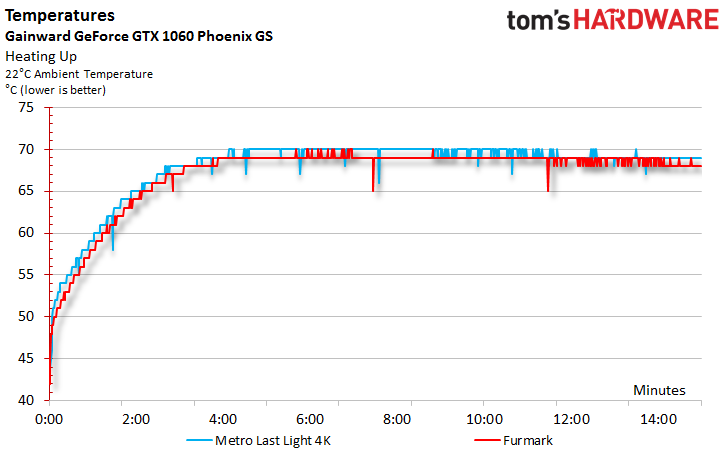
Measurements collected with the backplate removed likewise reveal acceptable values. A peak of approximately 181°F (83°C) from the VRMs is reasonable, in our opinion.
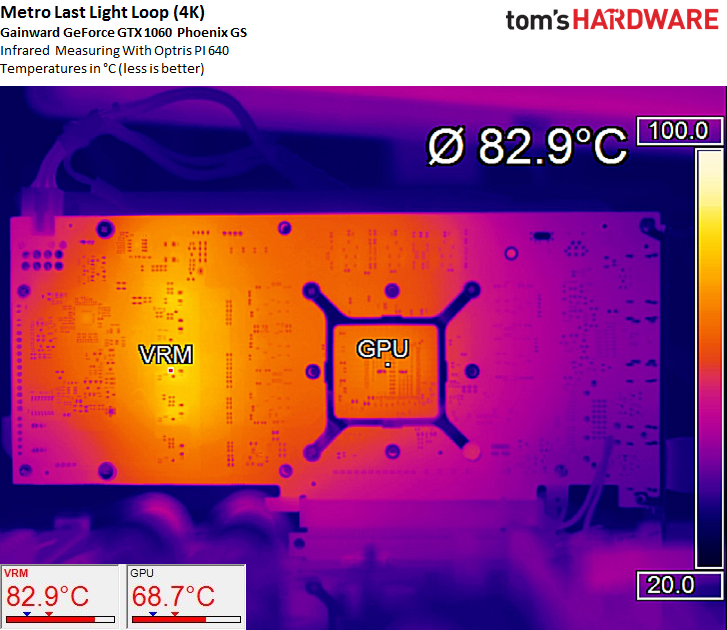
While the readings generated during our stress examination aren't exactly worrisome at ~192°F (89°C), they also reveal the cooling solution's weaknesses.
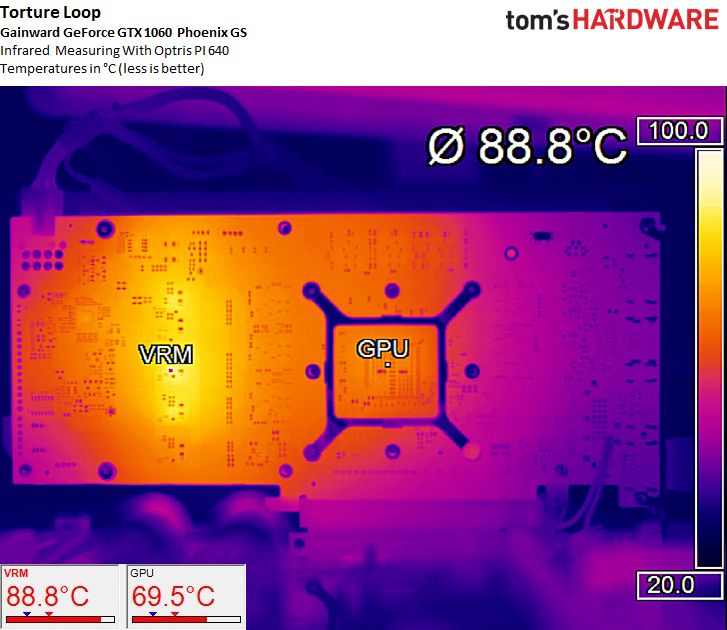
Gainward's cooling functioning is thus regarded equally merely acceptable. We get the impression that i member of the finance squad was assigned to each engineer, keeping costs in check more than enthusiasts similar to run into.
Sound Results
Hysteresis is not an upshot for most manufacturers. However, Gainward implemented a fan bend with likewise-low of an initial rotational speed for the transition between passive and agile mode. As a issue, the fans simply finish, and need to be restarted repeatedly. Even the all-time hysteresis won't assist when a manufacturer overestimates the quality of its components this grossly.

When the card is idle, racket is not measurable due to a semi-passive mode. A reading of 35.6 dB(A) under load is adequate, but non not bad. And then much air has to be moved through the thermal solution considering Gainward'southward libation isn't equally efficient as information technology should be. Spending a few dollars more than would accept gone a long way. On the bright side, we measure very little low-frequency bearing racket. What remains is the sort of acoustic energy that'southward easily absorbed by a case with sound insulation.
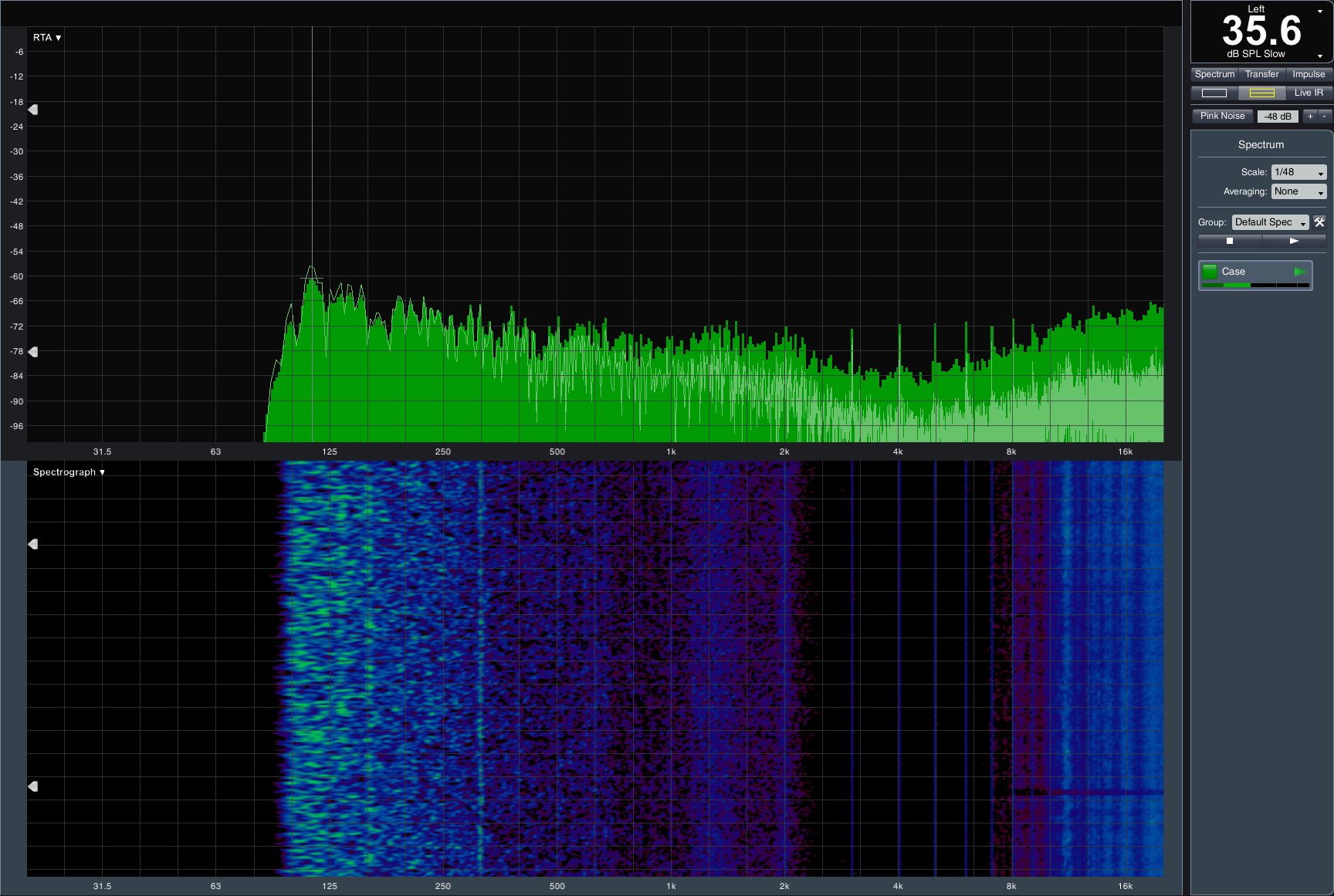
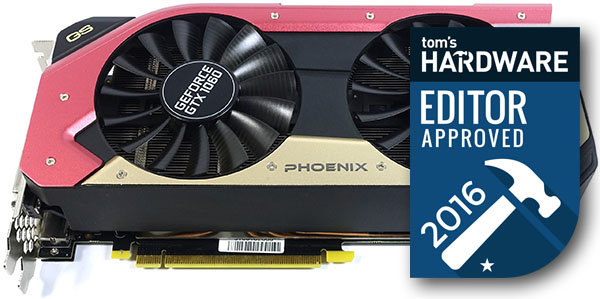
(opens in new tab)
More than: Nvidia GeForce GTX 1080 Roundup
More than: Nvidia GeForce GTX 1070 Roundup
MORE: All Graphics Content
Gainward Geforce Gtx 1060 6gb Test,
Source: https://www.tomshardware.com/reviews/nvidia-geforce-gtx-1060-graphics-card-roundup,4724-5.html
Posted by: hoffmanmrsooduraske.blogspot.com


0 Response to "Gainward Geforce Gtx 1060 6gb Test"
Post a Comment